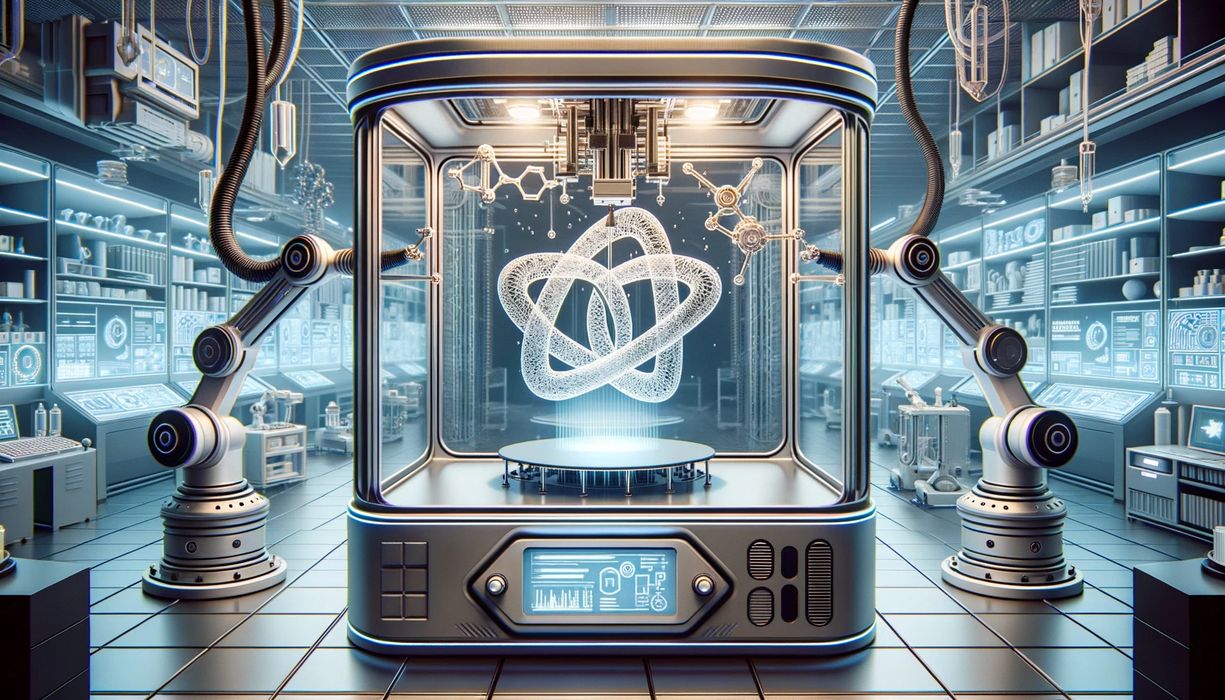
I’m reading a curious article on MakeUseOf that attempts to show how ChatGPT can be used for 3D printing.
The story, entitled, “How to Use ChatGPT for 3D Printing” presents several ways they believe the AI tool could be useful in 3D printing. After all, they are “make use of”.
I was eager to learn what these techniques could be, as I’ve been doing considerable experimentation with new AI tools myself. What would they come up with?
Their first suggestion is to use ChatGPT to create 3D models by generating an ASCII STL file. 3D models can be stored as STL, either in ASCII or binary format, with binary often being far smaller in size.
Their method was to simply ask ChatGPT to generate a STL file for a cube shape. They showed a screenshot of their attempt, and I tried this as well. ChatGPT seemed to know about STL files, so that was a good start.
I copied the text generated (it’s ASCII after all), and pasted it into a text file, and then renamed it to “.stl”. This failed miserably, as the code consistently would not import due to “premature end of file”. I could not figure out what was wrong, but clearly ChatGPT did something incorrect in its formatting.
The story suggests that generating complex 3D models using this approach would not be feasible, as OpenAI could not possibly provide sufficient resources to generate anything large.
My conclusion was that this approach isn’t really worth doing, at least at this point in the evolution of AI tools. Cubes and other simple shapes are instantly created in many other tools.
The story then suggests using ChatGPT to generate a Python script for execution in Blender to create a 3D model. They apparently made this actually work, but I strongly suspect in practice one would be doing iterative debugging to get it right. That’s usually the case whenever ChatGPT generates code, and it would be the same here.
In any case, this approach would only be feasible for very simple geometries, which can already be made in almost any 3D CAD tool.
The story suggests one could have ChatGPT inspect and repair damaged GCODE. I suppose this is theoretically possible, but GCODE can be enormous in size, far beyond the current capacity of ChatGPT. A far better approach would be to simply re-slice the 3D model to get better GCODE.
They also suggest using ChatGPT to generate prompts for 3D modeling. I don’t really understand what they’re suggesting here, but it may be they’re thinking of text-to-3D tools that require a prompt to generate 3D models. That might work, but at this point the text-to-3D tools are extremely limited in capability and accuracy. Tuning prompts for them would be a waste of time.
They recommend using AI add-ons to existing CAD tools, and say that “most 3D modeling applications have add-ons available that enable you to use ChatGPT”. Perhaps some do, but all of the tools I use definitely do not.
Finally, they suggest using ChatGPT to recommend print settings for the material you’re using. This is, of course, a really bad idea because the settings are dependent on the specific combination of machine and material, with a bit of the 3D model’s geometry as well. Their suggestion is basically the same as “what are the speed and temperature settings for this filament that has no label?” That’s not helpful.
In the end it seems that ChatGPT is really not going to help any serious 3D printer operator at this point. That may change in the future, but I would look to specific applications that leverage AI technology using domain data, rather than a general tools like ChatGPT.
Via MakeUseOf (Hat tip to Gary)
